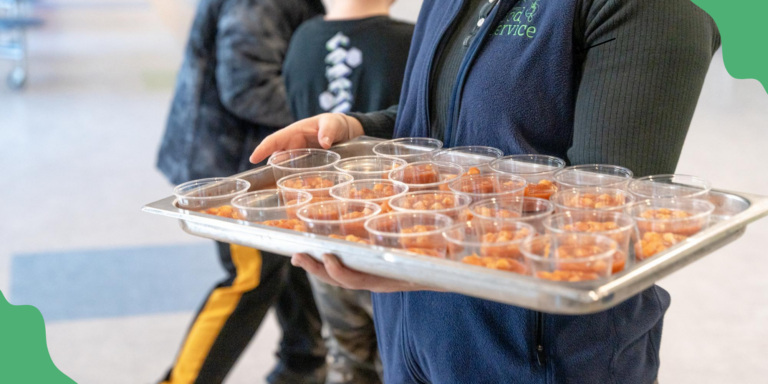What Suggestions Do You Have For Improving Lunch At Your School?
The New York Times invites students to read a recent article and share how they might help shape the cafeteria experience.
The New York Times invites students to read a recent article and share how they might help shape the cafeteria experience.

By Shannon Doyne for the New York Times

If researchers conducted a survey to measure student satisfaction with lunch at your school, what do you think your peers would say? What would you say?
At KairosPDX charter school in Portland, Ore., students recently took part in a “Tasty Challenge” event organized by FoodCorps, a nonprofit organization that connects children to healthy food in schools. The students sampled two recipes that featured butternut squash and voted for the one they liked better. The landslide winner, a soup, may be added to the school menu.
If the same event took place at your school, would butternut squash be received with such enthusiasm? Do you think school leaders would welcome student suggestions about how to improve school lunch if the suggestions promoted healthful eating? How well does your school do with offering meals that are nutritious and popular among students?
FoodCorps has found “a range of ways that schools can make their meals a more pleasant experience.” In “What if Children Ran the School Lunchroom?,” Anahad O’Connor writes:
“At Kairos, more than half the student population qualifies for free or reduced lunch. The school was founded in 2012 with a focus on improving educational outcomes for students of color. Kali Ladd, its co-founder and executive director, said that in the past Kairos’s students wouldn’t touch a vegetable unless it was smothered in ranch dressing or other condiments. “They never wanted to eat vegetables — they would just throw them out,” she said.
But now Kairos has a full time FoodCorps service member, Sophie Rasmussen, and a FoodCorps graduate who became the school’s nutrition and garden coordinator, Graham Schreiber. Together they teach the students how to grow and harvest vegetables in a community garden and use them in recipes. ‘With the access to the garden we’ve seen a dramatic change in the eating habits of our kids,’ said Ms. Ladd. ‘The first year we had a FoodCorps member, they harvested kale and made a stew with it, and that’s something we would have never seen before. In terms of helping our kids develop healthy eating habits, it’s been wonderful.'”

The Policy Brief: 2025 State Policy Updates

Alumni Spotlight: Cady Molloy, School District Executive Chef

6 Careers in Food That Make a Difference